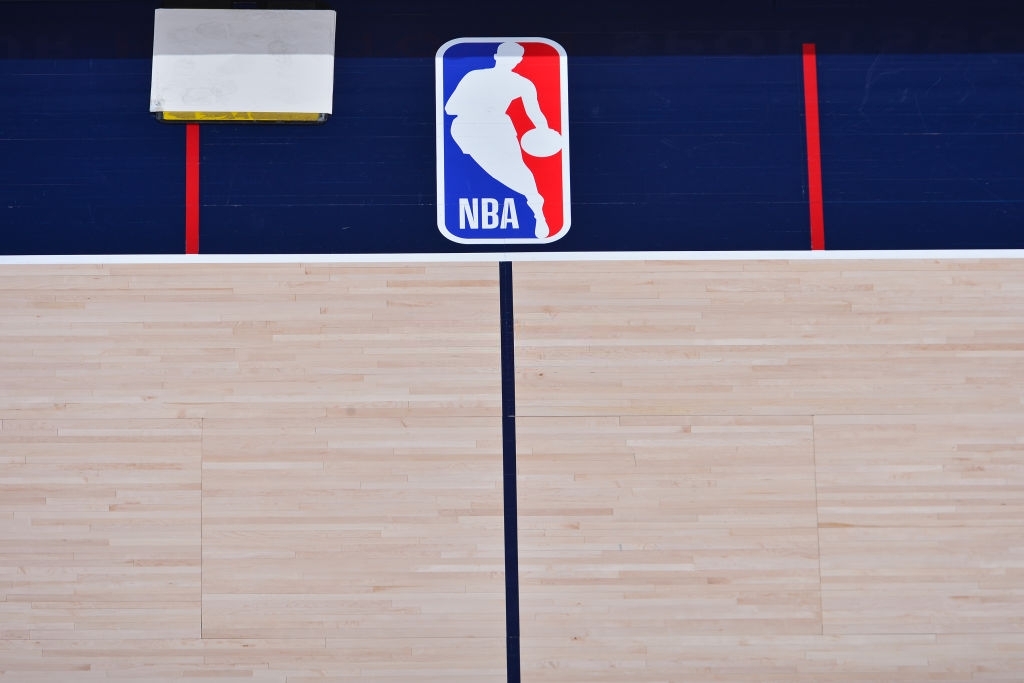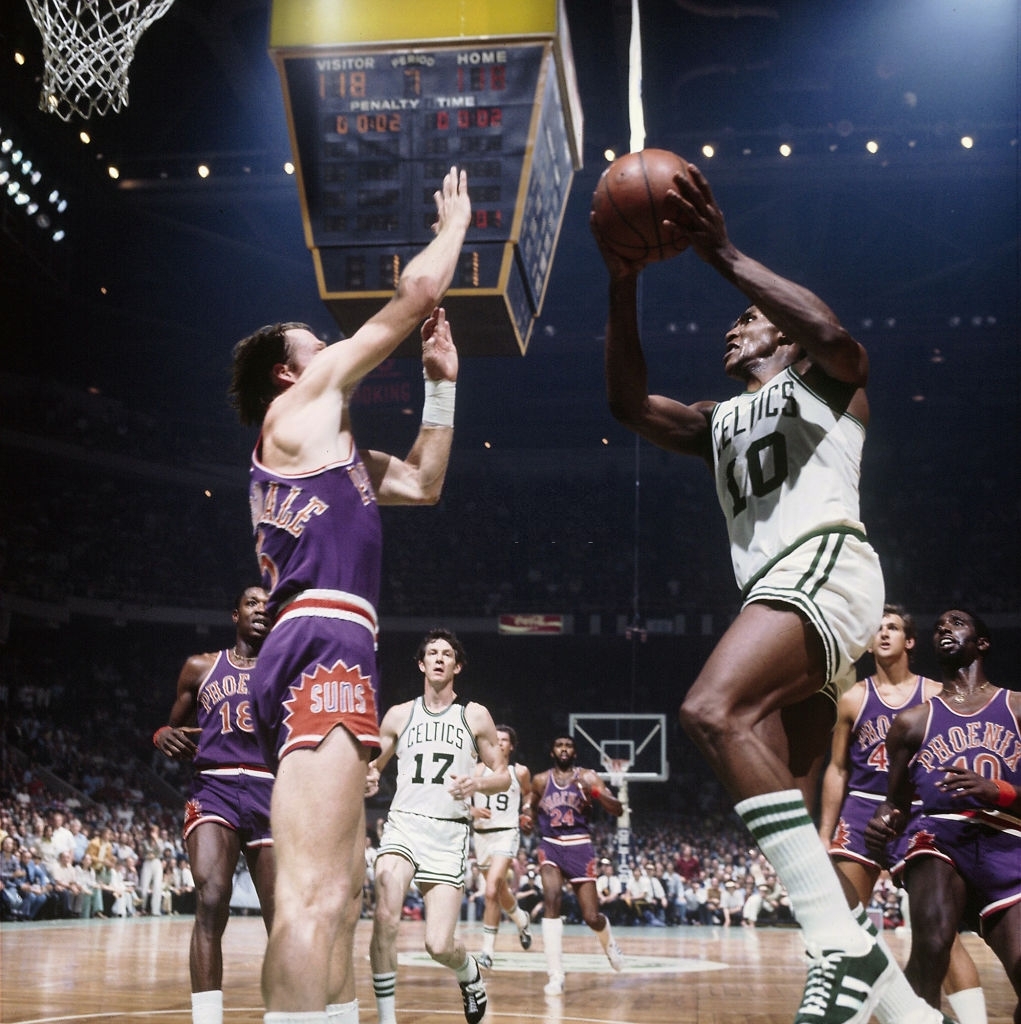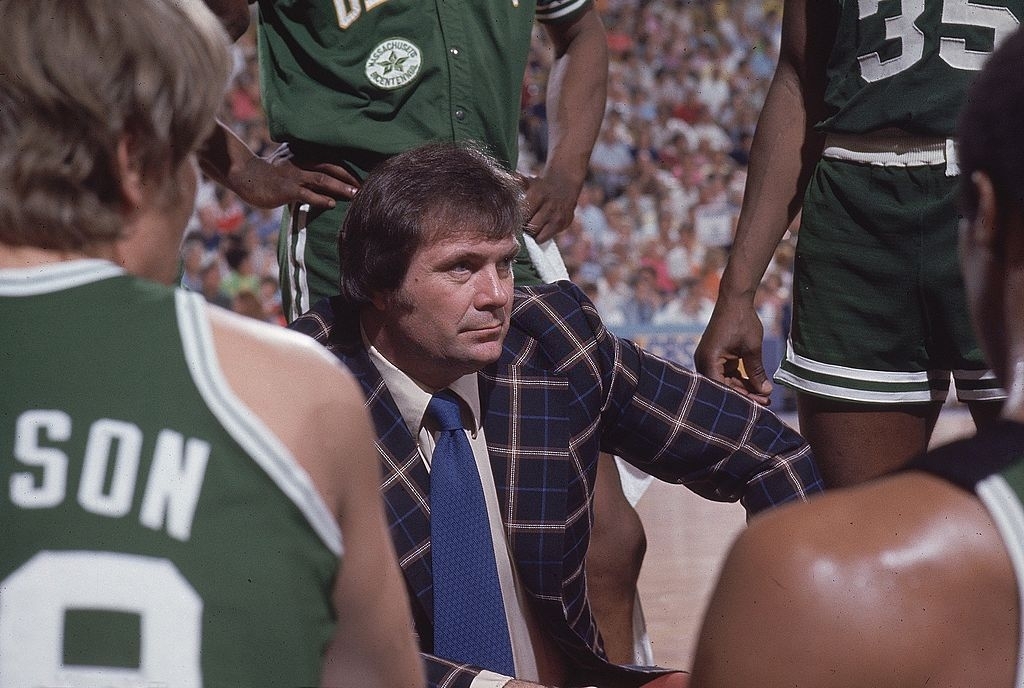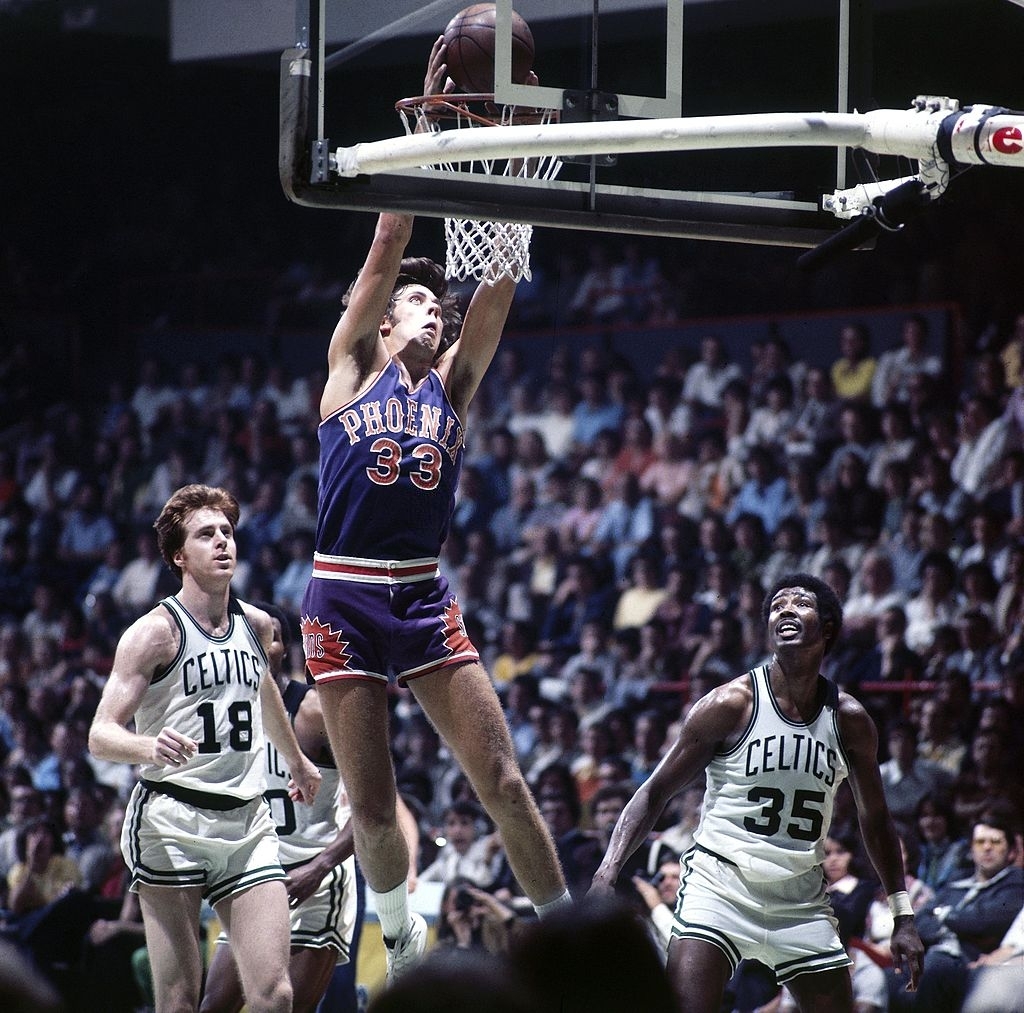The peculiar time out rule that caused an uproar in the 1976 NBA finals
1976 NBA final or 2021 NBA final?
With the NBA finals going on, let us go all the way back to the 1976 NBA Final; Game 5 of the series, to be precise. The Boston Celtics and Phoenix Suns met in this game, with the series tied at two games apiece. The famous incident that we are about to speak of, occurred at the conclusion of the second overtime period.

With two seconds remaining, John Havlicek hit what many thought to be the game-winning shot, but the ball went through the net. The Suns were given one second and a timeout once the crowd’s chaos had been controlled, however, there was an issue. The Suns were awarded a technical foul because they ran out of timeouts. That timeout happened to be a significant component in one of the NBA final’s most infamous controversies.
What exactly happened?
Because of what occurred during that specific period of the second overtime, this game’s last twenty seconds were the most memorable. With the Phoenix Suns receiving possession following their previous timeout, the Boston Celtics were up 109-106. Dick Van Arsdale of the Suns nailed a corner jumper to trim the deficit to one.
Jim Ard attempted to inbound the ball to John Havlicek, but Paul Westphal of the Suns snatched it. He transferred the ball to Arsdale after snatching it to save it from going out of bounds. Arsdale then passed it to Curtis Perry, who attempted but failed to make the game-winning shot to put Phoenix ahead. Havlicek accidentally tipped the ball back to Perry while attempting to retrieve the rebound. After that, he hit a jumper to give Phoenix a one-point lead.
1976 NBA final: More to come on a historic day
With five seconds left after Perry’s basket, the Celtics took a timeout. Their objective was to obtain a basket from either John Havlicek or Jo Jo White as soon as possible. After the break, Don Nelson inbounded the ball to Havlicek, who made a bank jumper to put the game out of reach. The Celtics players were walking back to the locker room as fans descended on the court.
Both the broadcasters and the referees determined that there was still time on the clock while the celebration was going on. The game was far from done. The audience had to be escorted from the court by police and security, who attempted to calm the situation.

The referees reset the clock one second after the authorities attempted to preserve order in the Boston Garden. The Suns intended to take a timeout with time remaining, but they didn’t have any. It’s a technical foul if you call a timeout and don’t have any remaining, according to the regulations. Surprisingly, the Suns for an additional timeout while accepting the technical foul.
They did this because, during those days, the team that committed the technical foul at the time still had possession of the ball. The Suns realized that drawing out a play and going for the tie was more preferable to rushing for a game-winning shot. Gar Heard of the Suns took the inbound pass after the stoppage and generated a match-tying buzzer-beater.

Things have changed since then
Without a doubt, this is a controversial moment, but it is nearly forgotten because Boston would go on to win Game 5 and the NBA title. The rules would be later changed as a result of this call, with the opposing team taking the technical foul shot and receiving the ball back.
DFS Optimizer – Built on Machine Learning (ML) Algorithms



